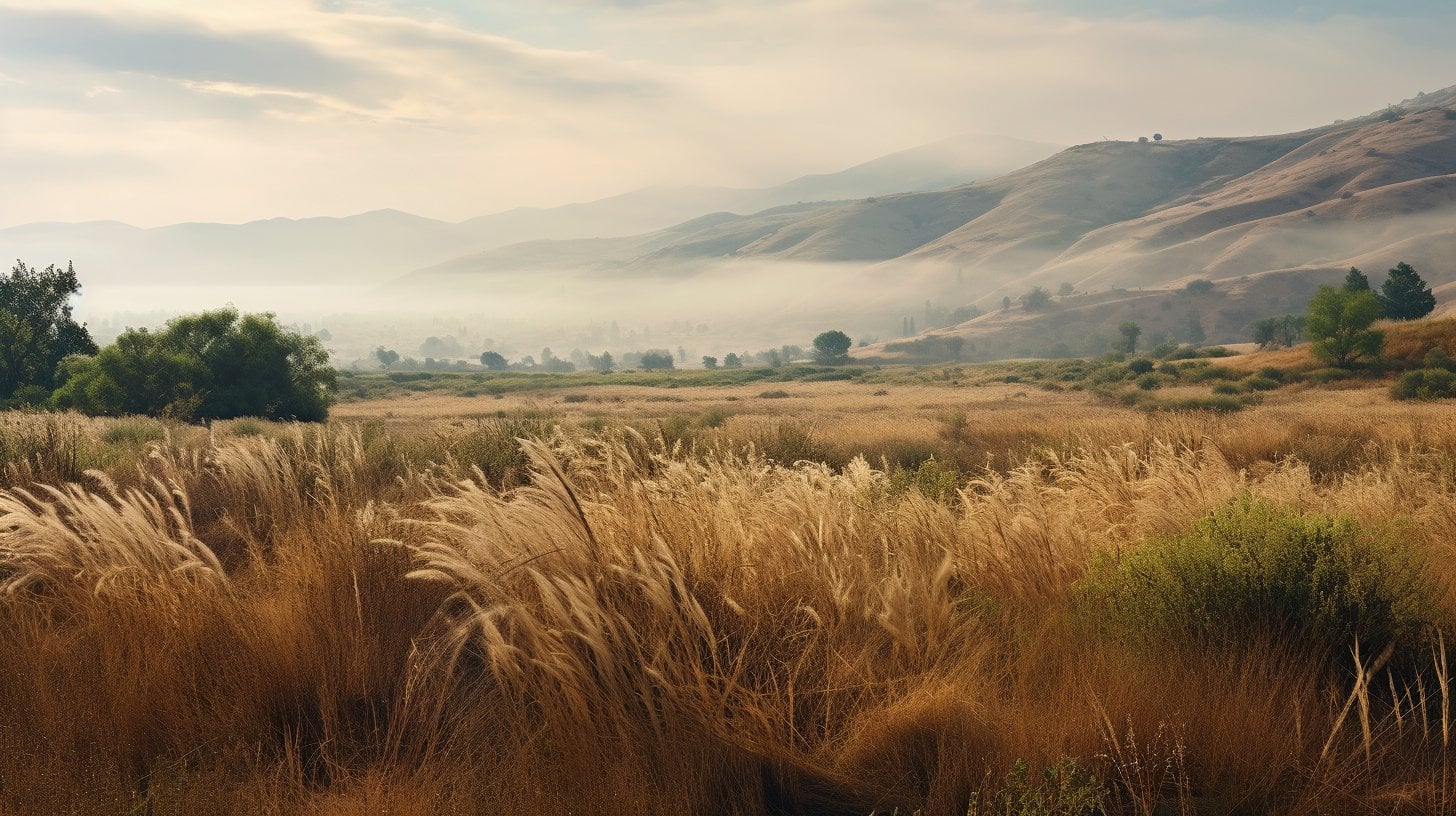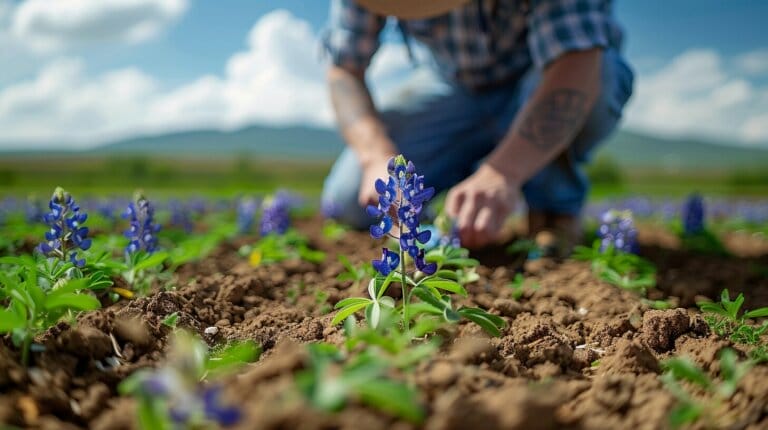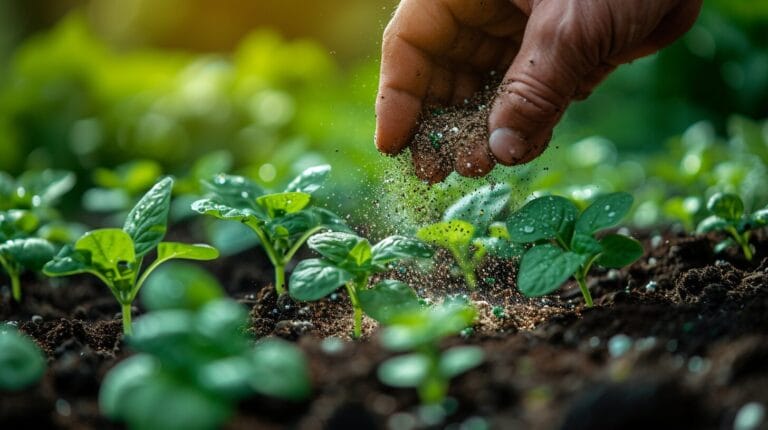Invasive Grasses in California: Identification & Control Guide
The silent encroachment occurring in California because of invasive grasses has truly fascinated me. These non-native plants are slowly permeating our ecosystem, outshining our native flora and transforming our scenic landscapes.
As a nature enthusiast, I’ve taken it upon myself to delve into the origins, impacts, and potential solutions to this growing problem. Join me as we explore this hidden crisis and learn how we can contribute to the fight against it in California.
Key Takeaways
- Invasive grasses in California threaten the state’s historic plant diversity and disrupt ecosystems.
- It outcompetes native species, alters habitats, and negatively impacts the food chain.
- They increase the risk of wildfires due to their rapid growth and flammability.
- Strategies for controlling it include biological control, mechanical control, chemical control, and restoration of indigenous plant species.
Exploring the Origin and Spread of Invasive Grasses in California
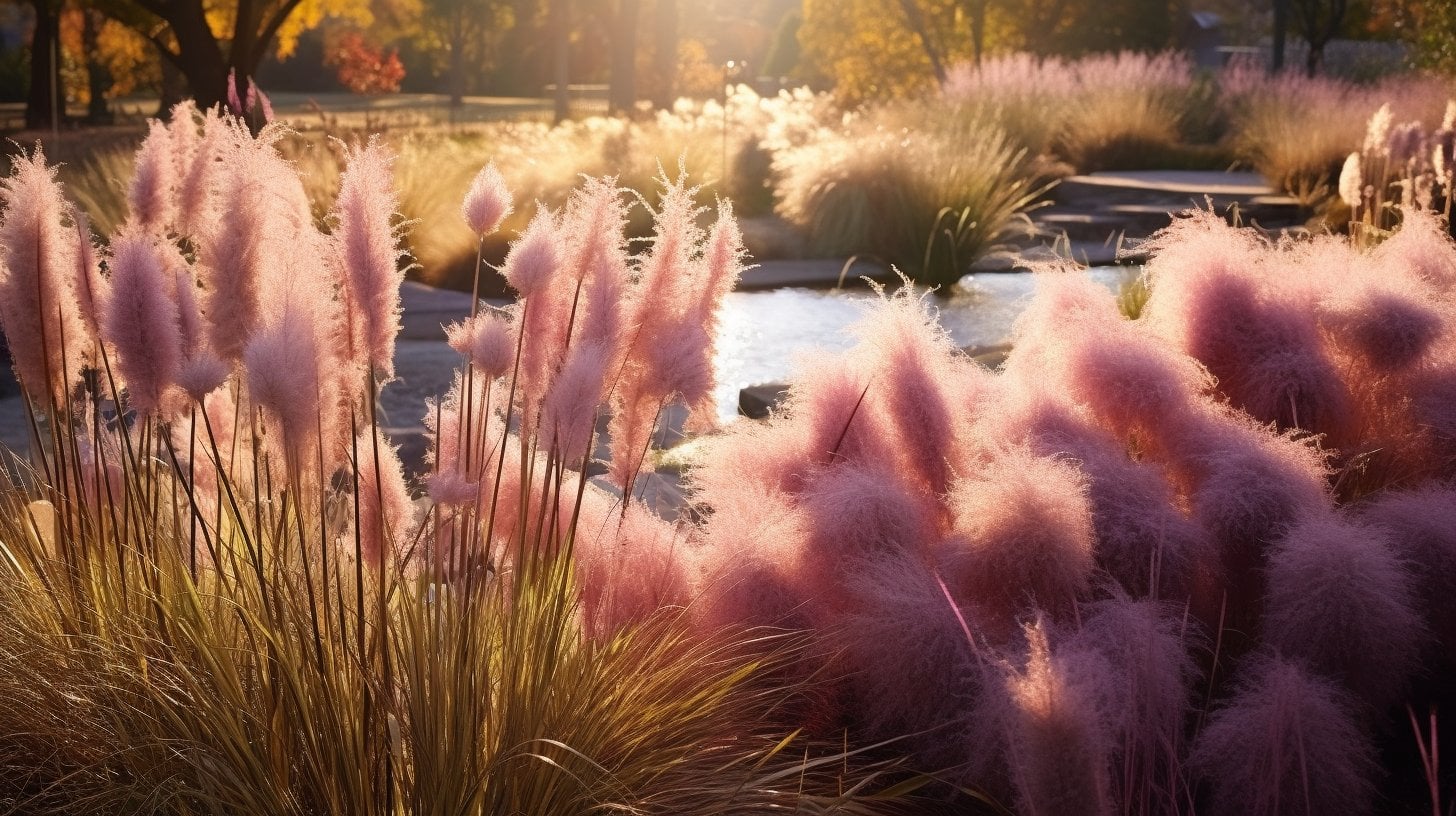
I’ve spent considerable time investigating the origin and spread of invasive grasses in California.
It’s fascinating to delve into the state’s historic plant diversity and see how non-native species have been introduced and spread.
Now, I’m ready to identify the most invasive ones disrupting California’s ecological system.
A Glance at California’s Historic Plant Diversity
It’s fascinating to delve into California’s rich history of plant variety, unfortunately threatened by invasive grasses. As a nature lover, I’m passionate about preserving various California regions’ myriad indigenous plant species.
The Golden State’s diverse ecological zones have allowed a broad spectrum of native grass and plant organisms to thrive. Each California indigenous plant plays a unique role in its ecosystem, contributing to a balanced and harmonious environment.
But this rise is changing our landscapes, outcompeting native species for resources, and altering habitats. It’s crucial that we take steps to protect our indigenous plant variety and ensure the survival of our California native organisms.
Unveiling the Culprits: Introduction and Spread of Non-Native Species
Delving into the issue of non-native species, I’m astounded by their rapid spread and significant impact on our environmental systems. The California Invasive Plant Council has been tracking the invasive grass species and their spread across the state.
- The invasive species in California aren’t just limited to this. They include a wide variety of plants, animals, and even insects.
- These non-native organisms often have no natural predators, allowing them to increase unchecked.
- Many of these invasive species are introduced unintentionally through travel or trade.
- The spread of non-indigenous species can lead to their loss of biodiversity.
- The impact of these species can be severe, affecting not only our environment but also our economy and health.
It’s clear that the spread of non-native organisms is a pressing issue that needs our attention.
Identifying the Most Invasive Grasses in California’s Ecosystem
Having turned my focus to the most aggressive flora in our state’s ecosystem, I’m struck by how many are actually types of grass. In fact, it is the most invasive plant species in California. These wreak havoc on our native species, outcompeting them for resources and drastically altering habitats.
I’ve compiled a short list of some of the most detrimental invasive grasses, each a perennial grass, with a brief description to aid in identification:
| Grass Species | Description |
| Cortaderia selloana | Tall, feathery plumes; can cause fires |
| Arundo donax | Fast-growing, bamboo-like appearance |
| Bromus tectorum | Spiky, drooping seed heads; fire hazard |
| Festuca perennis | Dense, round clumps; outcompetes natives |
Decoding the Impact of Invasive Grasses on Native Plant Species
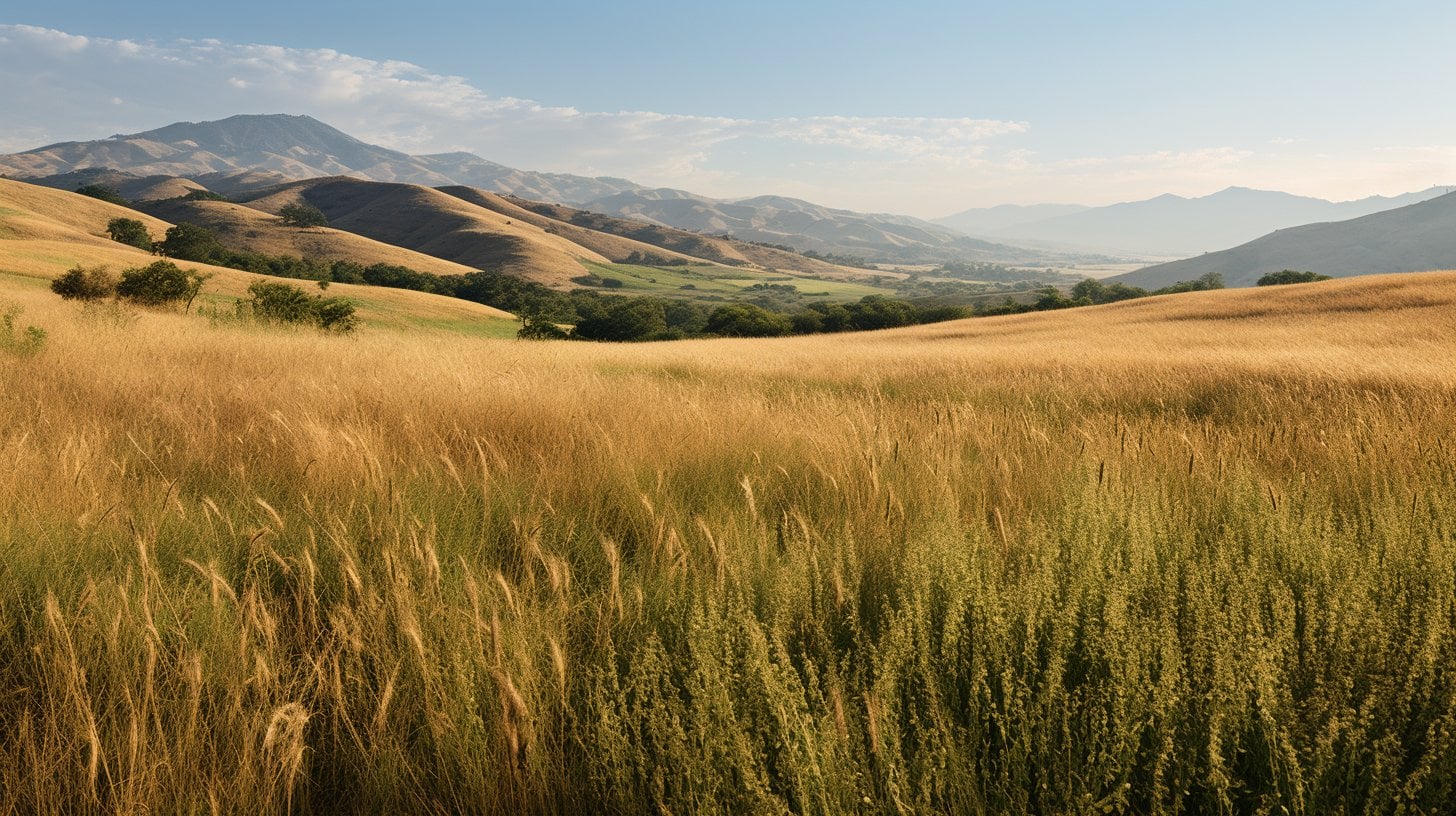
Now that we’ve looked at how invasive grasses have spread across California let’s understand their impact on indigenous plant species.
We’ll assess how these disrupt the natural balance, their domino effect on wildlife, and their influence on wildfire risks.
I’m excited to decode these complex interactions for you.
Disrupting the Balance: Competition and Alteration of Habitats
I’m fascinated by how it disrupts the balance by competing with native species and altering habitats in California. These invasive plants create a domino effect that ripples throughout the ecosystem.
Here are some key ways in which they challenge the status quo in our grasslands:
- They outcompete indigenous plants for resources, leading to a decline in their populations.
- They alter the soil composition, making it less favorable for indigenous plants.
- They change the structure of the ecological system, negatively affecting other species.
- They increase the risk of wildfires due to their rapid growth and dryness.
- They disrupt the food chain by replacing plants that local wildlife depend on.
Understanding these impacts is crucial for preserving our grasslands and protecting native organisms.
The Domino Effect: Consequences for Wildlife and Pollinators
Considering these disruptions’ cascading effects on our wildlife and pollinators is particularly alarming.
Invasive plants in California crowd out native species, making it difficult for them to thrive. These invasive plants aren’t just a threat to individual plant species; they’re attacking entire plant communities.
As a result, animals and insects that rely on these plants for food and habitat are also at risk. It’s a domino effect. When a plant organism is pushed out, the creatures that depend on it are also impacted.
When plant communities are disrupted, our wildlife and pollinators suffer. It’s a brutal cycle, and unless we address the problem of invasive plants, our native organisms will continue to struggle.
Fire and Frenzy: How Invasive Grasses Influence Wildfire Risks
Shifting our focus, let’s delve into how foreign plant species can exacerbate the risks of wildfires. The worst invasive ones, particularly annual grasses introduced to California, have been a perennial headache for fire management.
- They grow rapidly and densely, providing plenty of fuel for fires.
- These dry out quickly, becoming highly flammable.
- Their seeds spread and germinate quickly after a fire, leading to a vicious cycle.
- These invasive species outcompete indigenous plants, altering the landscape and increasing fire risk.
- They’re hard to control and eradicate, challenging fire management strategies.
Thus, understanding these risks emphasizes the need to effectively manage these invasive species, not just for ecosystem health but also for our safety.
Spotlight on the Most Troublesome Grasses: Centaurea Solstitialis and the Mustard Plant
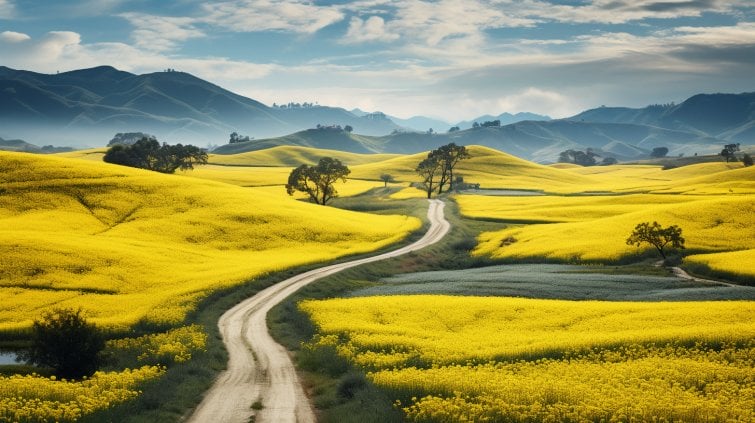
Now, I’m focusing on two of the most troublesome invaders: Centaurea Solstitialis and the Mustard Plant.
These hardy species aren’t just a nuisance; they’re causing serious harm to our native ecological systems.
Let’s take a closer look at these environmental bullies and explore the challenges and opportunities in managing them.
Yellow Starthistle (Centaurea Solstitialis): The Thorny Invader
I’ve been studying the Yellow Starthistle, a thorny invader causing significant issues in California. This highly invasive weed disrupts the local ecosystem and overwhelms indigenous plants.
The California Department of Food and Agriculture has been proactive in the management of this invasive species. However, its stubbornness presents a challenging situation. Here are some key points to ponder:
- Yellow Starthistle is a highly invasive weed.
- It’s causing significant disruptions in California’s environmental systems.
- The California Department of Food and Agriculture is spearheading its management.
- Despite ongoing efforts, the weed continues to spread rapidly.
- Effective long-term control strategies are urgently needed.
Tackling this thorny invader requires a comprehensive, sustained effort. It’s not just about preserving biodiversity but protecting our environment.
Mustard Plant: Blanketing Coastal California
Another plant, the Mustard, is blanketing coastal areas in a similar fashion to the Yellow Starthistle. This mustard, a non-native species, is invading the beautiful landscapes of coastal California. Its rapid spread is causing significant alterations to the indigenous plant community. Just like the Starthistle, it’s crowding out indigenous plants, reducing their chances of survival.
As a nature enthusiast, I find this quite disheartening. Walks along the coast are used to reveal a vibrant and diverse environmental system. Now, fields of the same invasive mustard dominate the view. It’s alarming to see how quickly non-indigenous plants can take over, pushing out the original inhabitants.
I hope we can find a way to restore our threatened environmental systems balance.
Managing These Invasive Species: Challenges and Opportunities
Managing these pesky plants proves to be a tough challenge. Still, it’s also an opportunity to learn and innovate in the field of environmental conservation. Controlling one invasive mustard species plant requires a well-organized invasive plant inventory and a sustainable plant management fees system.
Here are some key challenges and opportunities I’ve encountered while managing these invasive species:
- Identifying different species of this plant can be difficult, but it offers a chance to improve my botanical knowledge.
- High plant management fees can be daunting, but they can also stimulate the development of cost-effective strategies.
- The constant evolution of these species requires constant adaptation in our strategies.
- The invasive plant inventory process can be tedious, but it offers a unique opportunity to study their spread and impact.
- Eradicating these plants can be challenging, but it’s rewarding to see native organisms thrive again.
Strategies and Solutions for Controlling Invasive Grasses

Now that we’ve identified the enemies let’s gear up for battle.
I will share some savvy strategies and practical solutions for controlling them.
From biological and mechanical methods to the restoration of indigenous plants, we’ll explore all the options.
Biological Control: Using Nature’s Own Soldiers
I’ve been researching how nature’s own soldiers, such as insects and fungi, can be used as biological control agents against invasive grasses in California. It’s intriguing to learn how this noxious weed is fought with insects and other species native to the region.
Here are some fascinating facts I’ve discovered:
- Many species that have become invasive in California were initially introduced as ornamental plants.
- Certain insects, like the grasshopper, consume these grasses and help to control their spread.
- Fungi can also play a significant role, as many are pathogens of plants and can naturally control these invasive species.
- Some beetles lay their eggs in the stems, hindering their growth.
- Researchers constantly study and identify new biological control agents to combat these invasive species.
In essence, this biological control strategy is a sustainable and environmentally friendly approach.
Mechanical and Chemical Control: Pros, Cons, and Considerations
Switching gears, let’s delve into the pros, cons, and considerations of mechanical and chemical control methods in managing unwelcome plant organisms. Both methods have their place in the battle against invasive grasses in California.
| Method | Pros | Cons |
| Mechanical | Preserves native California flora | Labor-intensive |
| Chemical | Effective on large scales | Can harm non-target species |
Mechanical control can protect native California species, but it’s labor-heavy. Chemical control, on the other hand, can treat vast areas quickly but risks harming non-target species. Both methods require careful consideration. The National Park Service often uses a combination of both to manage weeds and invasive species, striking a balance between efficacy and environmental safety. Navigating these pros, cons, and considerations isn’t easy, but it’s vital for preserving our natural environmental systems.
Restoring Native Plant Species: A Key Element in the Fight Against Invasive Weeds
Restoring these is a crucial part of my approach to battling unwelcome weeds. It’s significant, especially along the California coast, where invasive aquatic species may cause significant damage.
To add depth, here’s my approach in a nutshell:
- Identifying and removing invasive plants introduced from other regions.
- Focusing on restoring indigenous plant organisms adapted to local conditions over time.
- Prioritizing areas where invasive aquatic species may pose a significant threat.
- Working closely with local communities to educate them about the importance of native organisms.
- Regular monitoring and maintenance to ensure the success of restoration efforts.
I believe this approach will help restore the natural balance and beauty of the California coast.
How You Can Help in the Battle Against Invasive Plants in California
I’ve realized that we all have a vital role in combating invasive plants in California.
By making a few adjustments to our daily routines, we can significantly impact this pressing environmental issue.
Here’s how I’m getting involved and how you can, too.
Gardening with Native Plant Species: An Easy Step with Big Impact
It’s amazing how much of a difference we can make by simply gardening with indigenous plant organisms. By planting native, we’re helping to restore the natural balance of our local ecosystems, especially in various areas of California. Gardening with indigenous plant organisms has numerous benefits: an easy step with a big impact.
- Many native garden plants require less water and care than exotic species.
- It provides a habitat for local wildlife.
- They improve soil health and water quality.
- Planting native helps limit the spread of invasive species.
- It contributes to preserving the natural beauty of our landscapes.
Participating in Conservation Efforts: From Community Cleanups to Citizen Science
Beyond just gardening with native species, I’m also taking part in various conservation efforts, from community cleanups to citizen science.
Notably, I’m actively combating the issue of this in California. These are a serious nuisance, affecting environmental systems and biodiversity. Participating in conservation efforts is an integral part of my commitment to protect California’s unique flora.
I’ve joined community cleanups, pulling them out and replacing them with indigenous plants. It’s hard work, but it’s worth it.
I’m also involved in citizen science projects, helping researchers track and study its spread. It’s an exciting way to contribute to conservation in California, and I’m proud to be a part of it.
Raising Awareness: Sharing the Importance of This Cause with Others.
On top of my hands-on efforts, I’m also passionate about raising awareness and sharing the importance of this cause with others. The fight against invasive grasses in California has been a part of my journey for over two decades. Understanding its impact and many invasive plants on our local ecosystems is crucial.
Here are some key points I often emphasize:
- The rapid spread in California disrupted indigenous plant life.
- The adverse effects on wildlife are dependent on indigenous plants.
- The increased risk of wildfires is due to these dry, fast-burning grasses.
- The vital role each person can play in mitigating this issue.
- The importance of being informed about invasive plants in California by learning, sharing, and taking action.
Raising awareness: sharing the importance of this cause with others is both a duty and a passion for me.
Discover how to get rid of crabgrass in flower beds — a common invader that can tarnish your garden’s beauty!
Frequently Asked Questions
What Are the Main Characteristics That Make a Grass Species Invasive?
The main characteristics that make its species invasive are its ability to adapt and thrive in new environments, rapid reproduction, and the potential to outcompete native species for resources.
Are There Any Benefits to Having Invasive Grasses in the Ecosystem?
There can be benefits to having them. They often provide ground cover, reducing soil erosion. They can also create habitats for certain species, contributing to biodiversity.
How Do Invasive Grasses Affect the Local Wildlife in California?
In my observation, they can drastically impact local wildlife. They often outcompete native species for resources, which alters habitats and disrupts food chains, potentially leading to a decline in certain wildlife populations.
Are There Any Specific Laws or Regulations in California Regarding the Control of Invasive Grasses?
There are specific laws in California for managing invasive plants. They’re enforced by the California Invasive Plant Council. It’s their job to control and prevent the spread of harmful non-indigenous species.
Do Invasive Grasses Have Any Impact on California’s Agriculture and Farming Industry?
Absolutely, they greatly impact our state’s agriculture and farming industry. They compete with crops for resources, disrupt native ecosystems, and can be costly to manage, thus affecting productivity and profitability.
Conclusion
So, we’ve journeyed through the origin, impact, and battle strategies against invasive grasses in California.
It’s clear that they are causing serious harm to our native species.
We can all lend a hand in controlling these invaders. By understanding their effects and implementing control strategies, we can protect and preserve California’s unique and beautiful plant diversity.

